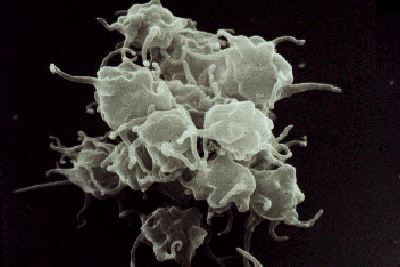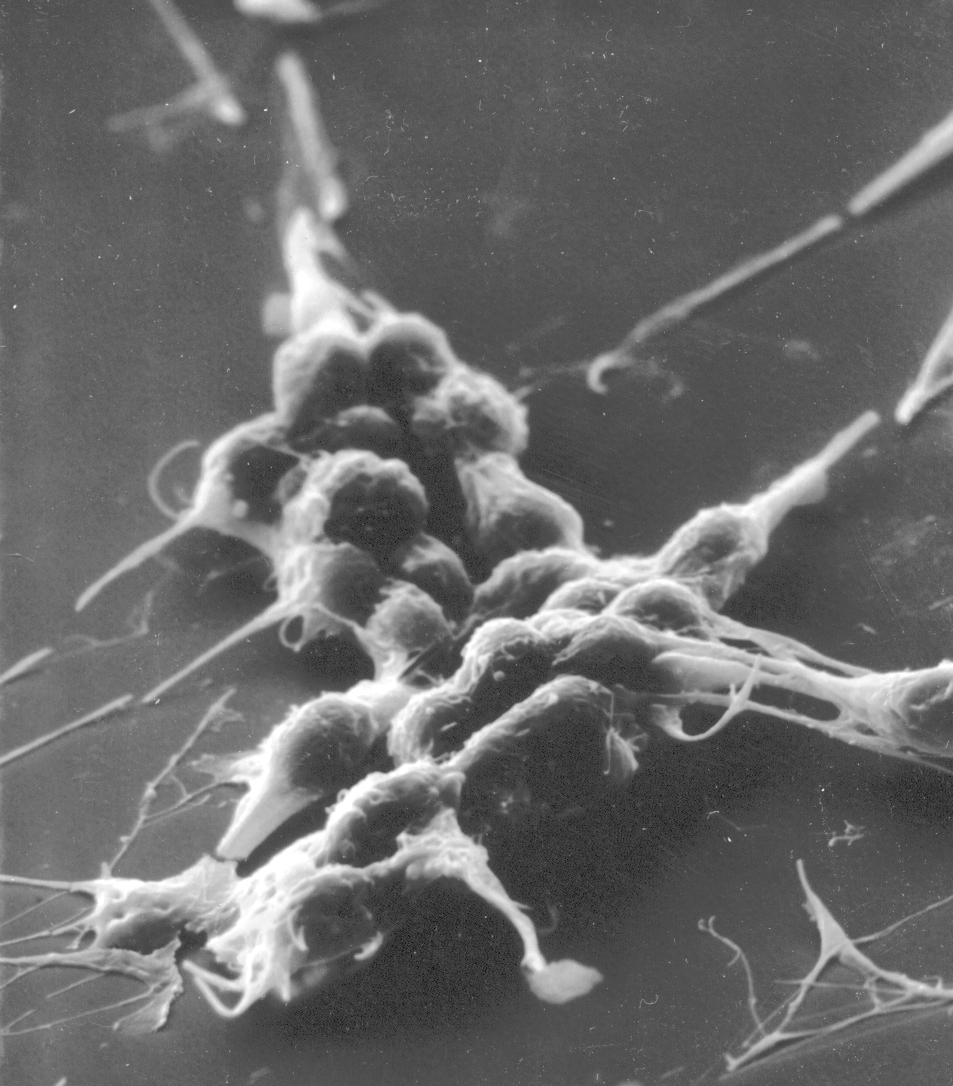Thrombotic Microangiopathy (TMA)
Thrombotic Microangiopathy (TMA) is a comprehensive term that describes syndromes with similar pathologic and clinical features. We use the term, "primary TMA syndromes," to describe the disorders for which there is evidence supporting a defined abnormality as the probably cause. This section of our website focuses on 4 primary TMA syndromes:
- Thrombotic Thrombocytopenia Pupura (TTP)
- Our information is the most extensive for TTP, which is the principle disorder we have studied in the Oklahoma TTP-HUS Registry since 1989.
- Drug-Induced TMA (DITMA)
- We recently completed a systematic review of all published reports describing drugs (and other substances) as a potential cause of TTP, HUS, or TMA. We have used the comprehensive term, TMA, to describe all of these drug-induced syndromes. This section of our website features the results of systematic review with a comprehensive table describing all of 386 articles that we identified and reviewed to determine the level of evidence for a causal association of the drug with TMA. This is the same fundamental methodology that we have used for the past 16 years for our systematic reviews of drug-induced thrombocytopenia.
- Shiga Toxin-Mediated Hemolytic-Uremic Syndrome (ST-HUS)
- In this section we describe the infectious cause, the epidemiology, and the clinical course of this TMA syndrome. HUS may be the most common among the primary TMA syndromes. Since the cause is Shiga toxin, a toxin secreted by certain strains of bacteria, it is often described as Shiga toxin-HUS, or simply ST-HUS.
- Complement-Mediated TMA
- This is a recently described primary TMA syndrome, resulting from uncontrolled activation of the alternative pathway of complement. Although the association of the hereditary abnormalities of proteins regulate the activity of the alternative pathway of complement with a TMA syndrome have been recognized with increasing frequency for 35 years, it was only when an effective treatment, eculizumab, became available in 2011 that these disorders became prominent. The prominence resulted from the marketing of eculizumab. The dilemma for physicians is the lack of clear clinical diagnostic criteria and the lack of rapid availability of genetic analysis for mutations of genes for the complement regulatory proteins. This disorder has been described as "atypical hemolytic uremic syndrome (aHUS)," since the original patients in whom uncontrolled activation of the alternative pathway of complement was described were children with clinical features of HUS but who did not have preceding diarrhea. Therefore they were described as "diarrhea-negative HUS" or "atypical HUS." However this term has no specificity and should be avoided. Use of the term "aHUS" only creates confusion, because it can be interpreted as describing almost all TMA syndromes.
Publications:
George JN, Nester CM. Syndromes of thrombotic microangiopathy. New Eng J Med 2014; 310 (7): 654-666. [Full Text]
James N. George, M.D.
Professor of Medicine
Hematology-Oncology Section, Department of Medicine
Department of Biostatistics & Epidemiology, College of Public Health
University of Oklahoma Health Sciences Center
IMPORTANT!
The information included in this website is for educational purposes only. The designers and operators of this site take no responsibility for the things you may do with this information. For advice on your unique medical condition, please consult your health care professional. By going further into this website you acknowledge that you have read and understood this disclaimer.



